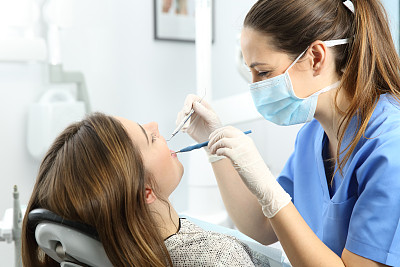The Essential Guide to Extracting a Tooth for Optimal Oral Health and Recovery
Summary: Extracting a tooth can be a daunting experience, but it is often necessary for maintaining optimal oral health. This essential guide outlines the critical aspects of tooth extraction, focusing on preparation, the extraction process, post-operative care, and signs of complications. Understanding these factors can significantly influence your recovery and overall dental health. This comprehensive approach offers insights into anticipating dental procedures and ensuring a smooth journey through tooth extraction, emphasizing the importance of following professional advice and self-care practices.
1. Preparing for a Tooth Extraction

Before undergoing a tooth extraction, adequate preparation is crucial for a smooth procedure. This involves scheduling a consultation with your dentist to discuss the specific reasons for the extraction. The dentist will assess your overall dental health and take necessary X-rays. Understanding the condition of the tooth and surrounding tissues will help the dentist develop a tailored extraction plan.
Additionally, it’s important to inform your dentist of any medications you’re currently taking or any allergies you may have. Certain medications and health conditions can affect the procedure and recovery process. This information helps your dentist to recommend appropriate anesthetic methods and ensures that they are prepared for any potential complications.
Lastly, remember to arrange for transportation and aftercare. After the extraction, you may need assistance getting home, especially if sedation is used. Planning ahead for a friend or family member to accompany you can alleviate stress on the day of the procedure.
2. The Tooth Extraction Process Explained
The actual tooth extraction procedure typically involves a few key steps to ensure both safety and comfort. First, local anesthesia is administered to numb the area around the tooth, providing a pain-free experience. In some cases, sedation may also be used to help manage anxiety and discomfort.
Once the anesthesia takes effect, the dentist will use specialized instruments to loosen the tooth from the socket. This process can vary depending on whether the tooth is impacted or can be easily removed. For impacted teeth, a surgical extraction may be necessary, involving cutting through gum tissue and possibly bone.
After the tooth is successfully extracted, the dentist will place gauze over the extraction site to control bleeding. Patients might be advised to bite down on the gauze for a specific period. This is a critical part of the procedure, as controlling bleeding aids in faster recovery.
3. Post-Operative Care for Recovery
Post-operative care is a vital part of recovery after a tooth extraction. Initially, it is important to follow your dentist’s instructions closely, as these will be tailored to your specific situation. A common recommendation includes resting for the first 24 hours to minimize swelling and pain.
Managing pain is another key aspect of recovery. Over-the-counter pain relievers like ibuprofen or acetaminophen can be effective; however, the dentist may prescribe stronger medication if necessary. It’s essential to avoid taking Aspirin, as it can increase bleeding.
Dietary adjustments are also important during the recovery period. For the first few days, stick to soft foods such as yogurt, mashed potatoes, and smoothies. Avoid hot and spicy foods, as well as using straws, since sucking can dislodge the blood clot that forms at the extraction site, leading to dry socket.
4. Identifying Signs of Complications
While most tooth extractions are successful, being aware of the signs of complications can aid in ensuring a smooth recovery. One of the most common complications is dry socket, which occurs when the blood clot becomes dislodged before the healing process is complete. Symptoms include severe pain and an unpleasant odor from the extraction site.
Additionally, any signs of infection, such as fever, excessive swelling, or discharge from the extraction site, should be addressed immediately. Contacting your dentist if you experience these symptoms is essential, as early intervention can prevent further complications.
Moreover, taking care of your oral hygiene post-extraction is critical. Gently brushing your teeth and avoiding the extraction site can prevent infection and promote healing. Your dentist may provide specific guidelines tailored to your recovery progress.
Summary:
Tooth extraction is often a necessary procedure for maintaining oral health. Proper preparation, understanding the extraction process, attending to post-operative care, and being aware of potential complications are essential for successful recovery. By adhering to professional dental advice, patients can improve their recovery experience and overall dental health.
This article is compiled by Vickong Dental and the content is for reference only



